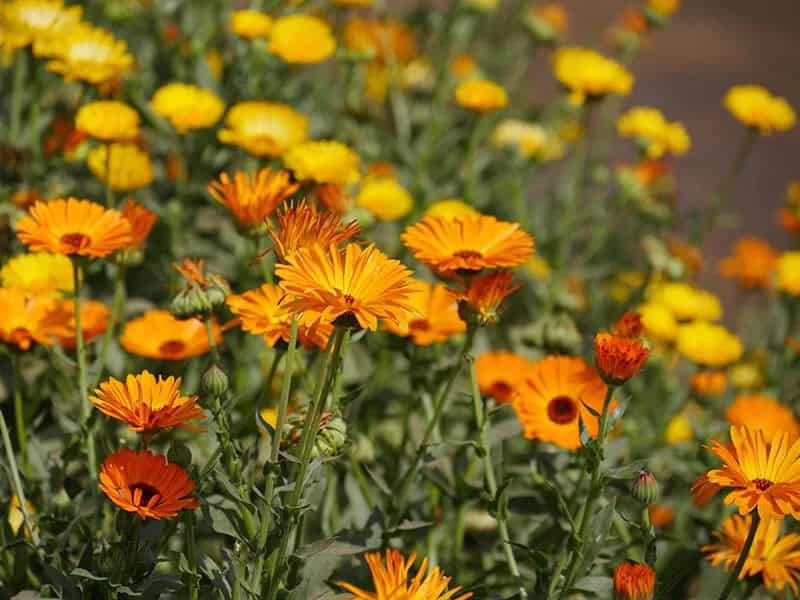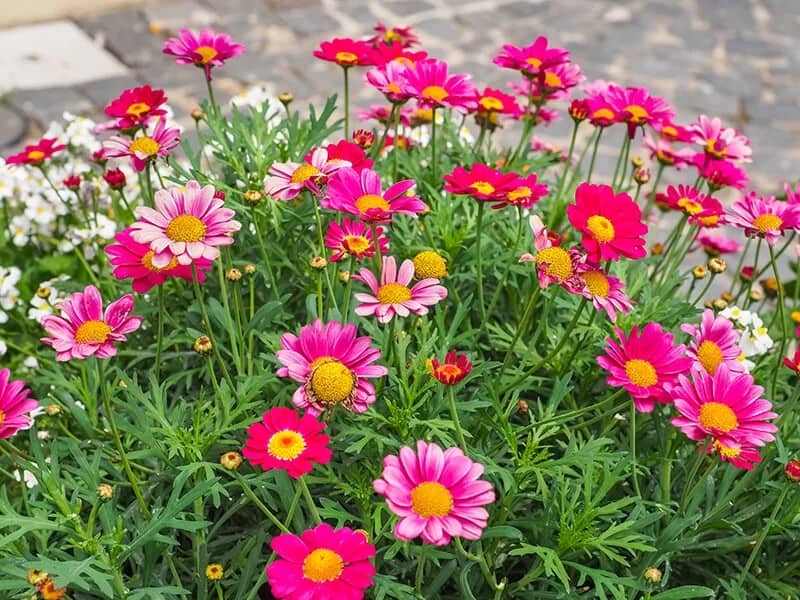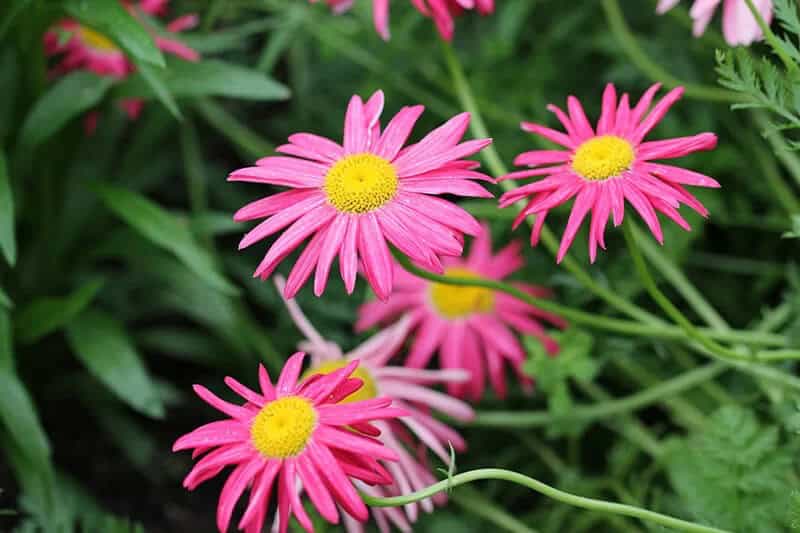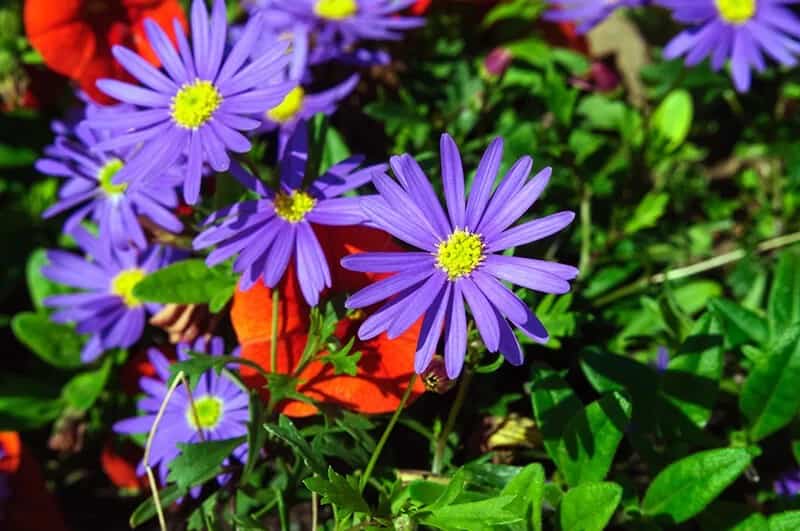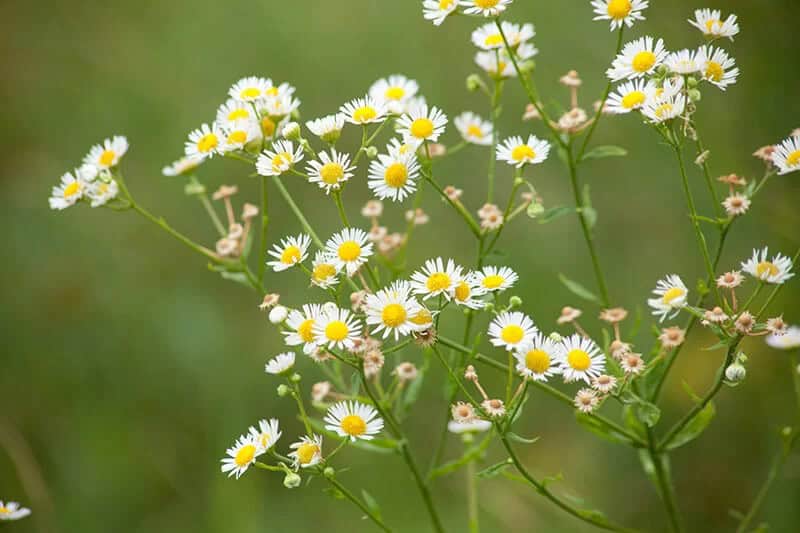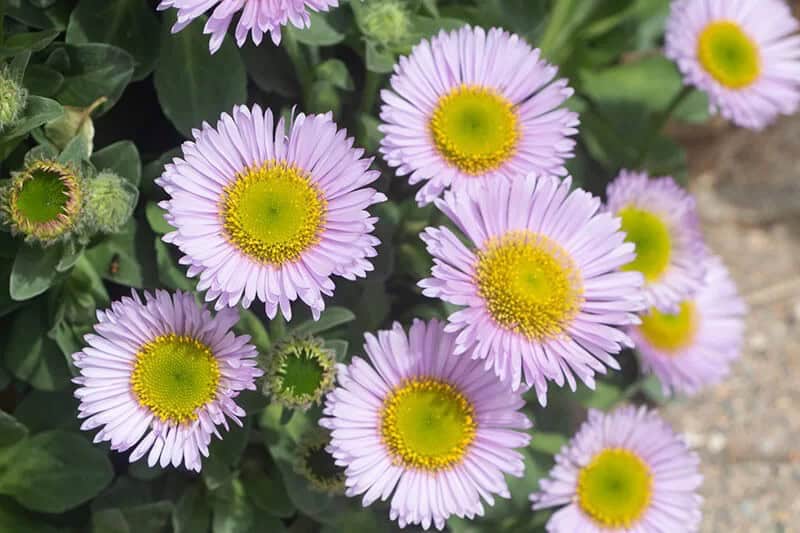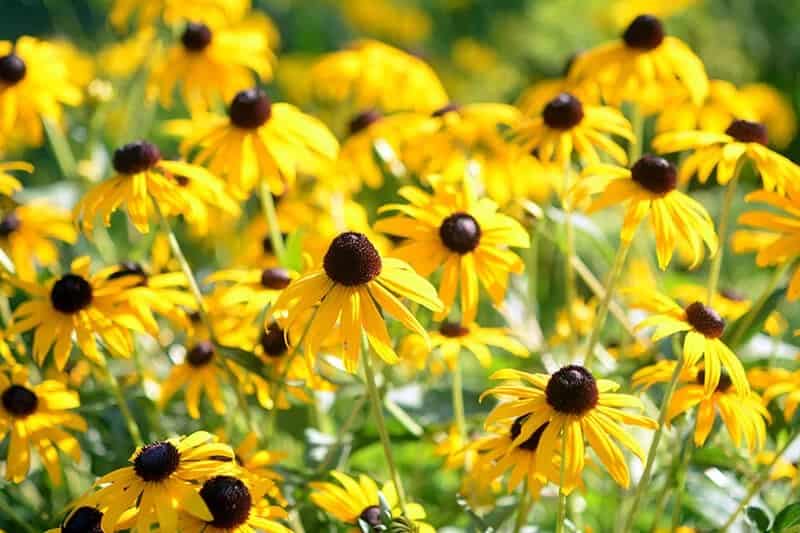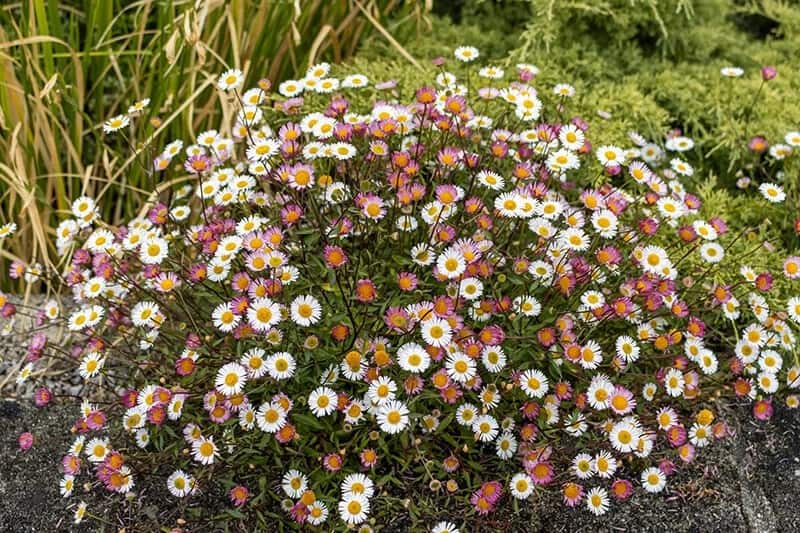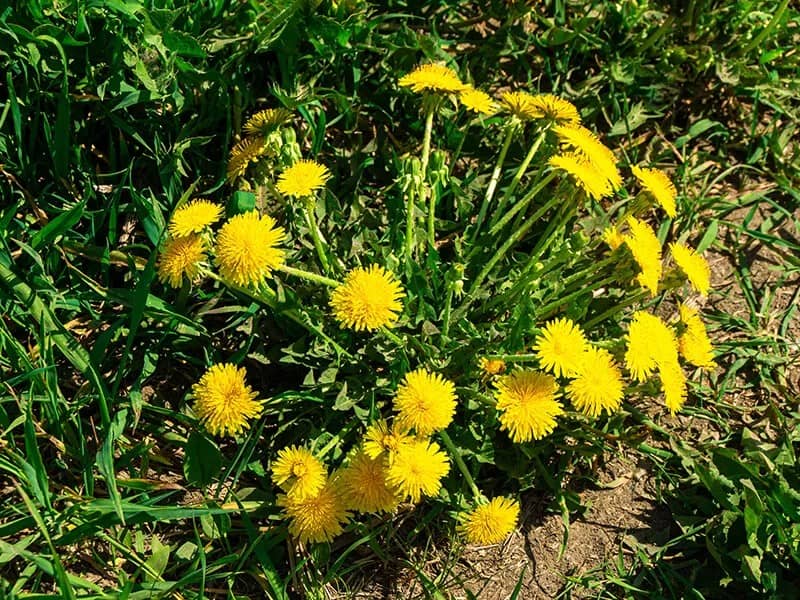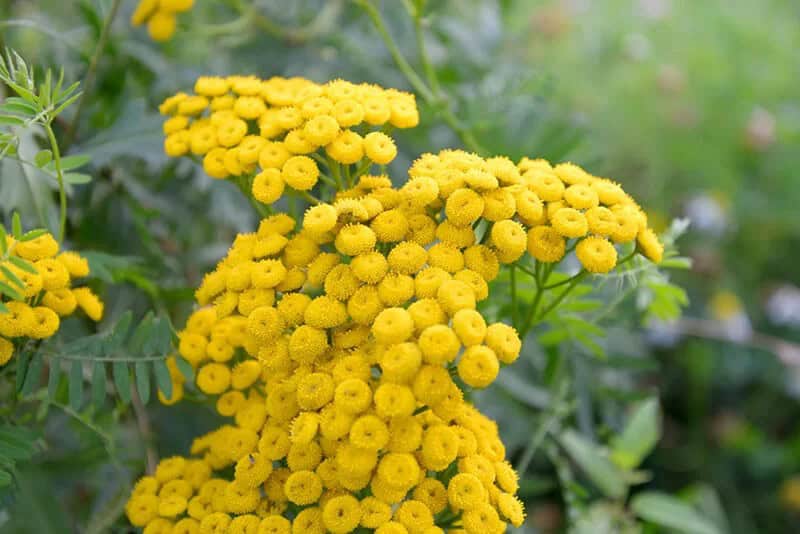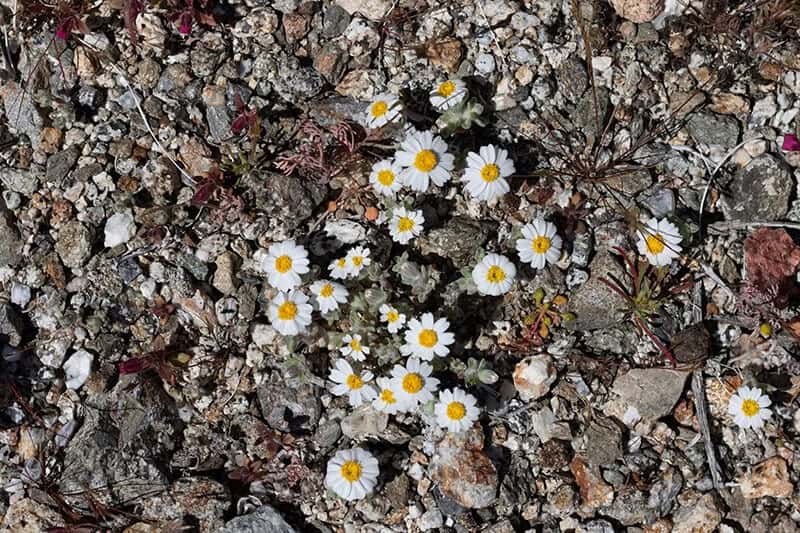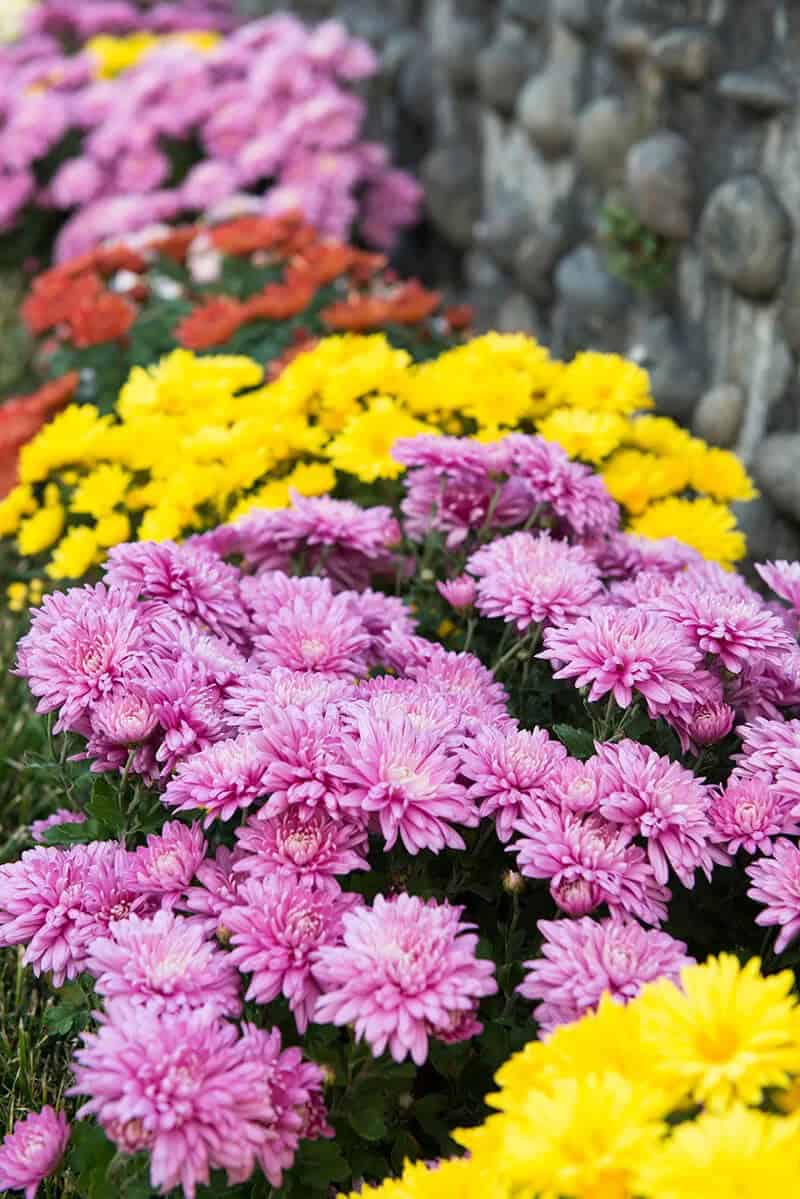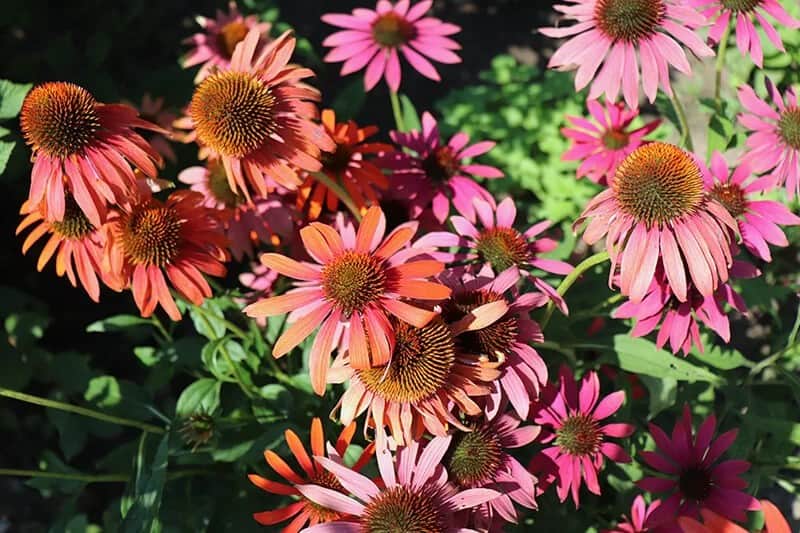Daisy flowers boast a vibrant color palette, low-maintenance requirements, and an extended blooming period, making them ideal for naturalizing your landscape, adorning vases, or crafting bouquets. This versatility stems from their simplicity in planting, as well as their ability to thrive under drought conditions and self-seed. While many daisy varieties share these traits, it’s essential to recognize that not all daffodils are created equal.
In fact, there exist several distinct types of daffodils, each boasting unique characteristics that set them apart from one another.
27 Chic, Glorious, and Versatile Exotic Dainty Florals with Vibrant hues for All Seasons
As the seasons change and spring begins to bloom, it’s hard not to be charmed by the ubiquity of daisy flowers. These cheerful blooms seem to pop up everywhere, bringing a splash of color and joy to our daily lives. With their wide range of varieties and symbolic meanings, it’s no wonder that daisies are often used in spring bouquets, table centerpieces, and floral decorations.
Their vibrant hues make them a popular choice for special occasions like weddings, Valentine’s Day, Easter, and Mother’s Day. And, as an added bonus, they’re surprisingly low-maintenance and can thrive as houseplants, making them a great option for busy or new gardeners.
English Daisy (Bellis Perennis)
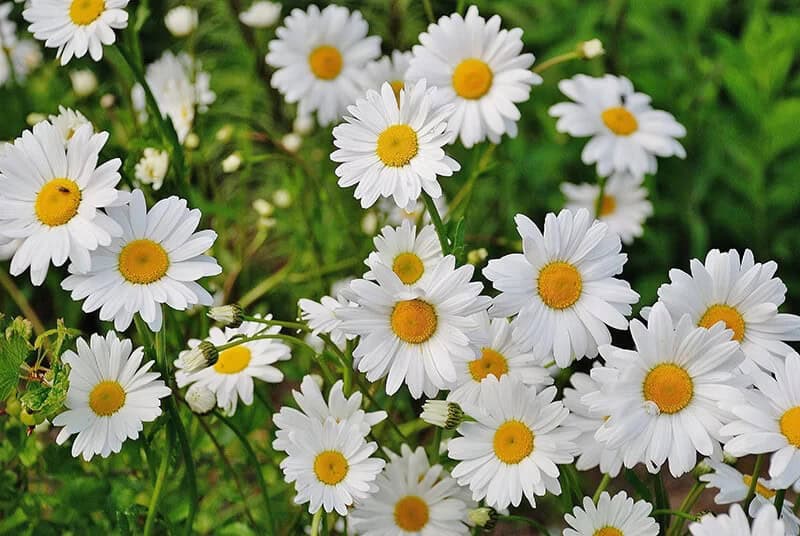
The English daisy, a biennial bloomer, boasts a unique symbolism tied to innocence and purity. To thrive, it requires regular watering and well-draining soil that’s neither too soggy nor too alkaline (pH range of acidic to alkaline). Its ideal growing zones span from 4 to 8, with full or dappled shade providing the perfect light conditions.
As a symbol of springtime vitality, English daisies typically bloom in the early months, their yellow-centered flowers featuring white, pink, or red petals that unfold with the rising sun and fold at night. Lawn daisies or European daisies, they’re often sought after for adding a pop of color to an otherwise dull setting. Seeds should be sown in spring or early fall, with transplanting discouraged.
Gerbera Daisy (Gerbera Jamesonii)
The Gerbera Daisy plant is a vibrant and eye-catching addition to any space. Its flowers are renowned for their striking colors, making them a true showstopper. These colorful blooms can be enjoyed from early spring through fall, adding a pop of color to your indoor or outdoor spaces. For maximum visual impact, pot the plants by a sunny window or grow them directly on your lawn.
If you’re looking to add an extra touch to your summer gatherings, consider using the Gerbera Daisy’s brightly colored petals as a unique and Instagram-worthy garnish for your water-based refreshments.
Marguerite Daisy (Argyranthemum Frutescens)
The Marguerite Daisy is a charming perennial herbaceous plant that can add a pop of color to flower beds, borders, and containers alike. With its ability to thrive in both full and partial sun, it’s no surprise that this daisy variety is also a great addition to indoor decor. Whether you’re looking to brighten up your garden or bring a touch of nature indoors, the Marguerite Daisy is sure to delight.
Its delicate petals with vibrant yellow centers are not only visually stunning but also make excellent cut flowers, house plants, and garden staples.
Oxeye Daisy (Leucanthemum Vulgare)
The Oxeye daisy is not only a visually appealing addition to any garden, but it also has practical uses. Its roots and leaves can be used to brew herbal tea, while the leaves themselves are edible and can be added to salads or stews. This hardy perennial thrives in dry conditions, making it an excellent choice for areas with low rainfall. With its ability to form a dense ground cover, Oxeye daisy is also a great option for those looking to suppress weeds.
The flowers themselves emit a cheerful and mystical aura, thanks to their vibrant petals. With proper care, including low to average watering, well-drained soils that are mildly acidic to neutral, and full or dappled shade, Oxeye daisy will bloom from May through August in zones 3-8.
Painted Daisy (Tanacetum Coccineum)
With their vibrant blooms, painted daisies are a stunning addition to any garden. As we explore their symbolism, let’s dive into the world of immortality, where these flowers thrive in well-drained, acidic soils with full or partial sun. In zones 3 to 7, they burst forth in late spring to mid-summer, painting the landscape with vibrant hues. But it’s not just their beauty that sets them apart – painted daisies are also a natural deterrent for pests, eliminating the need for pesticides.
Whether you’re looking to create a barrier between plants or add a pop of color to your lawn, these flowers are an enchanting choice. Just be sure to select the exact variety when ordering, as their similar appearance can lead to misidentification.
Shasta Daisy (Leucanthemum x Superbum)
Becky Shasta daisies, a stunning variety of flowers, possess a unique symbolic significance. Representing purity and innocence, these blooms exude an aura of wholesomeness. When it comes to their care, Becky Shasta daisies are relatively low maintenance. They thrive in well-drained soil with a neutral pH, moderate water intake, and receive full sun exposure. As a result, they’re perfect for borders, mixed flower beds, or even cutting gardens.
Their vibrant colors and sparkly petals create an eye-catching display that’s sure to delight. Typically blooming during the summer months, Becky Shasta daisies are suitable for growing zones 4 through 9.
Swan River Daisy (Brachyscome Iberidifolia)
The Swan River Daisy (Brachyscome iberidifolia) is a versatile and attractive herbaceous plant that thrives in various settings. Its vibrant petals are truly captivating when grown en masse, making it a popular choice for gardens, borders, pots, and containers. As they trail over the edges of their holders, they create a stunning display that can also be used to frame pathways or add color to bloom beds.
The delicate blue and violet blooms offer a breathtaking sight, while the soft-textured foliage adds an extra layer of charm. With its low-to-moderate water needs, rich soil, and full sun requirements, this plant is relatively easy to care for. It can be grown annually or perennially, making it an excellent addition to any garden, regardless of size or style.
Pale Purple Coneflower (Echinacea Pallida)
Pale Purple Coneflower is a stunning choice for prairies and landscapes alike. Its unique symbolism represents strength and healing, making it an excellent addition to any garden. With low to moderate water needs and the ability to thrive in well-drained soil with a neutral, alkaline, or acidic pH, this flower is adaptable to various environments. It flourishes in zones 3 to 10 and requires full sun to dappled shade, ensuring its beautiful blooms can be enjoyed by all.
As an added bonus, the leaves and flowers are edible and have been used for medicinal purposes, making it a valuable addition to any herbal or wildflower garden. Moreover, this flower’s showy and radiant blossoms transform our gardens into a breathtaking sea of purple and pink in June, July, August, and September, providing endless hours of visual delight.
Common Fleabane (Erigeron Philadelphicus)
The symbolism surrounding fleabane is deeply rooted in its association with purity and innocence. This aspect of the plant’s character is reflected in its delicate, yet striking appearance. When it comes to growing conditions, fleabane requires moderate watering, with fertile and moist soil that is slightly alkaline. It thrives in zones 2-7, where it can soak up full sun or partial shade.
As the seasons change, fleabane blooms from May to June, creating a stunning display of yellow and white flowers that are sure to attract pollinators like butterflies. Not only do these blooms add visual interest to gardens, but they also serve as a vital source of nectar for these important insects. The plant’s leaves and stems have been used to create tea, which is said to possess diuretic, astringent, diaphoretic, and emmenagogue properties, making it useful for treating various ailments.
Seaside Daisy (Erigeron Glaucus)
The Seaside Fleabane is a popular choice for various garden settings, including butterfly gardens, waterfront gardens, rock gardens, borders, beds, slopes, and containers. Its versatility extends to xeriscaping as well, but it thrives in areas with high water permeability and proximity to the ocean. This plant’s striking appearance, characterized by its bold, whimsical look, is a major draw.
Additionally, it can be successfully grown on vertical surfaces, such as walls, for features like banks and rockeries.
Coneflower ‘Hope’ (Echinacea Purpurea)
Enchanting and attractive, the mauve-hued purple coneflower (Echinacea purpurea) is a stunning addition to any garden. Its symbolism is deeply rooted in strength and healing, making it a popular choice for many gardeners. This hardy perennial requires average watering needs, thriving in well-drained soil with a pH range that accommodates neutral, acidic, or alkaline conditions. Its growing zones span from 4 to 10, allowing it to flourish in various climates.
The flower’s ability to bloom from July to October means you can enjoy its beauty throughout the warmest months of the year. When planted in full sun, the purple coneflower produces lush blooms that attract bees, birds, and hummingbirds, adding an extra layer of décor to your outdoor space. Its versatility makes it a great choice for lawns, gardens, patios, or containers.
Black-Eyed Susan ‘Indian Summer’ (Rudbeckia Hirta)
The vibrant Blue-Eyed Susan flower is a striking addition to any garden. Its symbolism reflects resilience, endurance, and survival, making it a powerful symbol for those who seek strength and perseverance. This hardy bloom thrives in average water conditions and can grow well in soil that drains well, stays moist, or has a neutral, alkaline, or acidic pH level. It’s adaptable to growing zones 3 to 7, allowing gardeners across various climates to enjoy its beauty.
Providing full sun to partial shade, the Blue-Eyed Susan flower will bloom throughout the summer until the first frost, attracting bees and butterflies to your garden. Although the seeds are poisonous, the roots have been used in cosmetic applications, adding a unique dimension to this remarkable flower.
With its oversized, luminous blooms, the Blue-Eyed Susan is an excellent choice for cutting gardens, prairies, meadows, or cottages, bringing a touch of elegance and sophistication to any setting.
Mexican Fleabane (Erigeron Karvinskianus)
The Mexican daisy is a symbol of childhood innocence, simplicity, and joy. This versatile plant requires moderate watering and can thrive in a variety of soil conditions, including well-drained, neutral, alkaline, acidic, chalky, loamy, sandy, or clay-like textures. Its growing zones are 5 to 9, making it suitable for many regions. As for light, the Mexican daisy prefers full sun exposure.
Its blooming season spans from March to November, offering a prolonged period of vibrant colors and sweet fragrance. This flower can be used in various ways, such as lining garden beds, cascading over retaining walls, or simply potting it up to enjoy its beautiful blooms. The Mexican daisy’s color-infused petals and farm-fresh charm will delight your senses, with its pleasant aroma sure to tickle your nose’s sense of smell.
Brown-eyed Susan (Rudbeckia Triloba)
The daisy in question possesses a range of symbolic significance, serving as protection against malevolent spirits and sickness. In terms of its basic needs, it requires average water intake, well-drained soil with a neutral to alkaline pH, and a fertile loam-based substrate that can also include clay or gravel. This hardy plant thrives in USDA growing zones 4 through 8, where it is exposed to full sun.
As the seasons transition from May to October, the flowers burst forth in vibrant yellow hues, adorned with sparkly ray florets that create a stunning visual display throughout the summer months. The blooms also attract a variety of beneficial insects, including butterflies, rosy cross beetles, tiger beetles, and sphinx moths.
When consumed as an herbal tea, the flowers are believed to have therapeutic properties for alleviating cold symptoms, while internal consumption is said to aid in weight loss. Moreover, when burned, the wood exhibits potent insect repellent and disease-resistance properties.
Common Dandelion (Taraxacum Officinale)
The humble flower, with its vibrant yellow hue, is often found thriving in a variety of environments, from manicured yards to wild prairies. Its adaptability is matched only by its impressive list of uses – it’s not only edible and attractive, but also plays host to a diverse range of beneficial insects, including butterflies, bees, and predatory flies. As an added bonus, the plant’s flowers can be used to create teas that help thin the blood when consumed internally.
With its ability to resist pests and diseases, this hardy bloom is a true marvel of nature. And let’s not forget its showstopping blooms, which burst forth in vibrant yellow shades between May and October, providing a kaleidoscope of color throughout the year.
Hilton Daisy (Gerbera Aurantiaca)
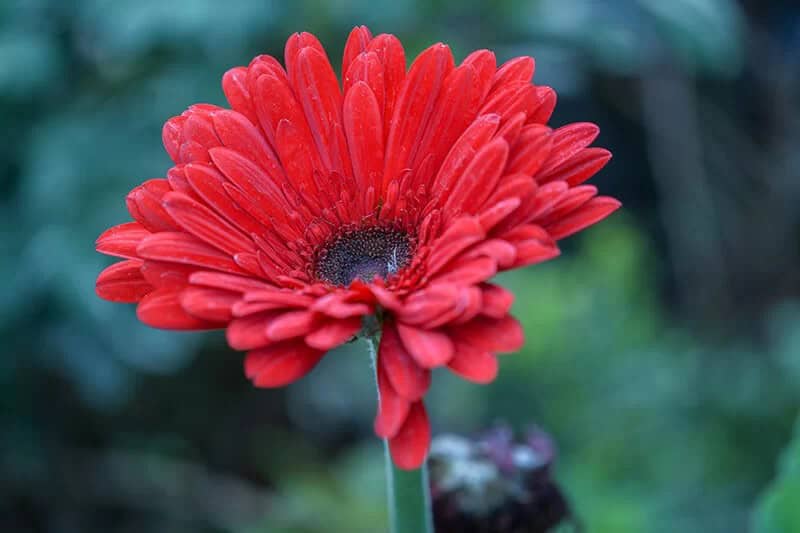
The vibrant and cheerful Hilton Daisy is a stunning sight to behold, with its crimson, orange, pink, or yellow blooms radiating warmth and energy. Its luminous petals, often found on silky branchlets, can add a pop of color to any moment. Unfortunately, this endangered species is protected by law, making it crucial to appreciate the beauty of its images rather than collecting its seeds.
With the ability to thrive both indoors and outdoors, Hilton Daisy brings a burst of vitality and charm to any environment.
White Arctotis (Arctotis Stoechadifolia)
This charming flowering plant is a delightful addition to any garden. Symbolically, it represents a cheerful endeavour, making it an excellent choice for those looking to bring a touch of positivity into their outdoor space.
In terms of its growing requirements, this plant is relatively low-maintenance. It thrives in areas with low water needs and does well in soil that drains easily and has a dry, sandy texture. Gardeners in USDA hardiness zones 8 to 11 will find it easy to grow.
As for light, the plant requires full sun to dabble in shade, making it suitable for areas that receive partial sunlight. The blooming season typically runs from March to August, offering a lovely display of white flowers throughout the spring and summer months. Not only is this plant an attractive ground cover, but its velvety showy blooms also make beautiful cut flowers.
Double Feverfew (Tanacetum Parthenium ‘Flore Pleno’)
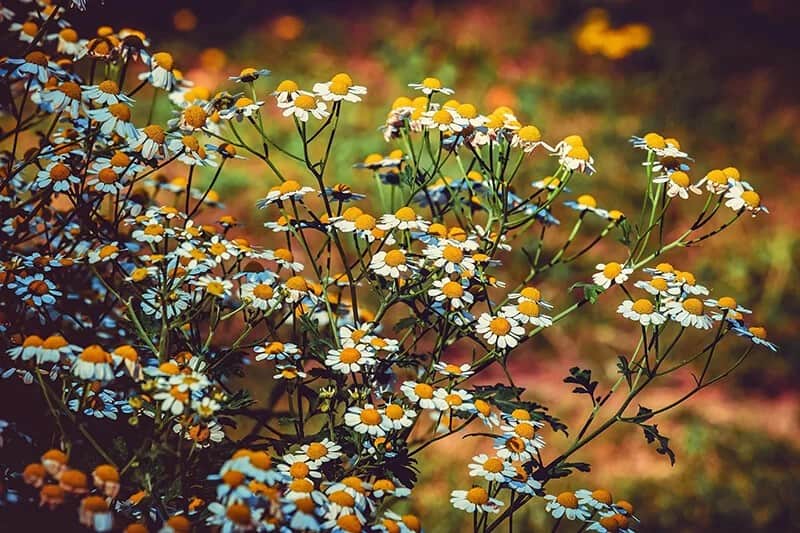
The Tanacetum parthenium ‘Flore Pleno’ cultivar, also known as double feverfew, is a stunning perennial herbaceous plant that stands out for its supple, stylish, and vibrant foliage. Its primary use is medicinal, with the plant being used to treat colds and migraines. Additionally, it has insect-repelling properties, making it an excellent choice for planting along garden borders to keep pests at bay. To maximize its benefits, harvest the leaves during the summer season.
In terms of growing conditions, this plant thrives in average water needs, with a range of soil preferences including normal, sandy, clay, moist, neutral, alkaline, and acidic textures that are also free-draining. It can be grown in zones 4 to 8 and requires full sun exposure. Blooming typically occurs from July to September.
Golden Tansy (Tanacetum Vulgare)
The majestic yellow blooms of this plant have garnered significant attention for its adaptability to thrive in a variety of settings. With symbolism tied to protection, health, resistance, and immortality, it’s no wonder that this vibrant addition has become a staple in cottage gardens and naturalized areas alike.
The delicate young leaves can be savored raw or cooked into salads, while the plant’s nutmeg-like flavoring makes it an excellent substitute for those seeking a unique culinary experience. Furthermore, the flowers themselves are edible, serving as a delightful garnish or addition to various dishes. When steeped in hot water, the leaves and flowering stems yield a tea that is both bitter and lemony, offering a refreshing pick-me-up on warm days.
This plant’s requirements include low to medium watering needs, preferring moist and well-drained soil with high organic matter content. It thrives in zones 4 to 8, basking in full sun or partial shade. With its blooming season typically occurring from July to August, this radiant gem is sure to bring a pop of color and vibrancy to any outdoor space.
Mojave Desert Star (Monoptilon Bellioides)
White Mojave Desert star flowers, also known as Bello Nido or beautiful nursery, hold a special significance with their symbolism representing new beginnings, hope, innocence, fun, and affection. These grass-like flowers thrive in low-water environments with dry, sandy, alkaline, or mildly acidic soils. They are ideal for growing zones 9 to 10 and require full sun exposure. The blooming season typically spans from January to May.
Notably, the initial stage of growth features stems ranging from two to four inches long, carrying inflorescences with bilaterally symmetrical anthers that resemble equal spheres on level stalks or sometimes steeply erect. These dense spherical clusters are subtended by moderate to thick spreading hairy bracts and numerous leaves packed closely on short branchlets. The plant’s unique features have been appreciated for centuries, with early Spanish explorers referring to it as Bello Nido.
Navajo Indians utilized the seeds for food, the sap as an adhesive sealant, and young stems and leaves were cooked as greens. In modern times, healers have employed root infusions to treat depression and anxiety.
Indian Chrysanthemum (Chrysanthemum Indicum)
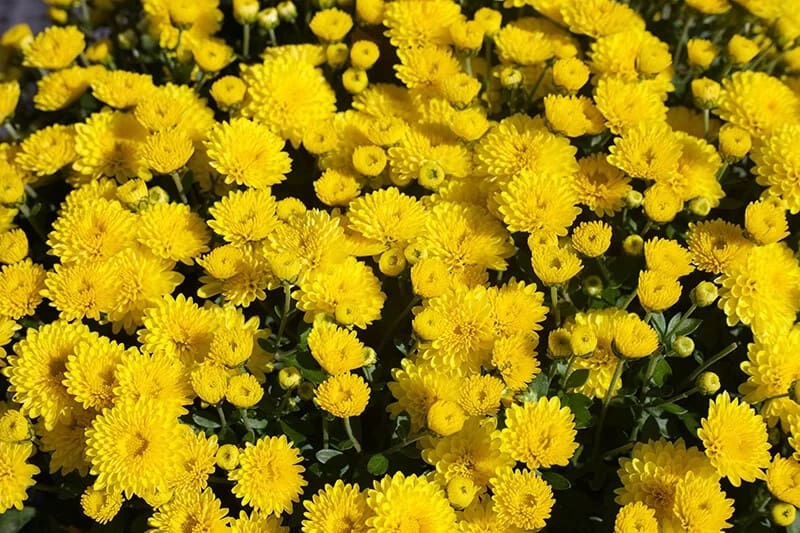
The Indian Chrysanthemum is a versatile plant that offers more than just its stunning visuals. Its edible and medicinal properties make it a valuable addition to any garden or indoor space. With its ability to thrive in a range of conditions, from full sun to moderate water needs, this plant is perfect for those who want to incorporate some herbal tea ingredients into their daily routine.
The plant’s symbolic significance also lies in its representation of innocence and purity, making it a beautiful addition to any garden or home. Whether you’re looking to add some color to your outdoor space or bring the outdoors in, the Indian Chrysanthemum is a must-have for anyone who appreciates the beauty and utility of this stunning plant.
Florist Daisy (Chrysanthemum Morifolium)
Chrysanthemum morifolium, a stunning flowering houseplant, boasts breathtakingly beautiful flowers in shades of orange, yellow, pink, red, white, and purple. Its botanical allure is matched only by its artistic flair, making it a coveted choice for indoor and outdoor spaces alike. As a symbol of happiness, love, longevity, and joy, this plant is often sought after as a gift option due to its ease of care and dependable blooming nature.
To thrive, Chrysanthemum morifolium requires regular watering, preferring moist, acidic, fertile, well-drained soil that’s either sandy or loamy. It flourishes in growing zones 2 to 12 and basks in the warmth of full sun. Its blooming season typically spans from June to November, making it a delightful addition to any home.
Showy Townsend Daisy (Townsendia Florifer)
The Townsend Daisy is a captivating flower that embodies childhood innocence, simplicity, and joy. With its profuse blooms, silver stamens, and white banner petals, it’s no wonder why this daisy has become a popular choice for indoor gardens. To keep your Townsend Daisy thriving, it requires low water needs, moist and well-drained soil, and full or dappled shade. This charming perennial can be grown in USDA zones 3 to 9, making it an excellent option for many gardeners.
In terms of blooming season, the Townsend Daisy typically flowers from April to August, providing a stunning display of color throughout the spring. With its simple maintenance requirements and rapid growth rate, this daisy is perfect for busy gardeners who want to add some charm and showiness to their indoor spaces.
Marguerite ‘Golden Butterfly’ (Argyranthemum Frutescens’ Golden Butterfly’)
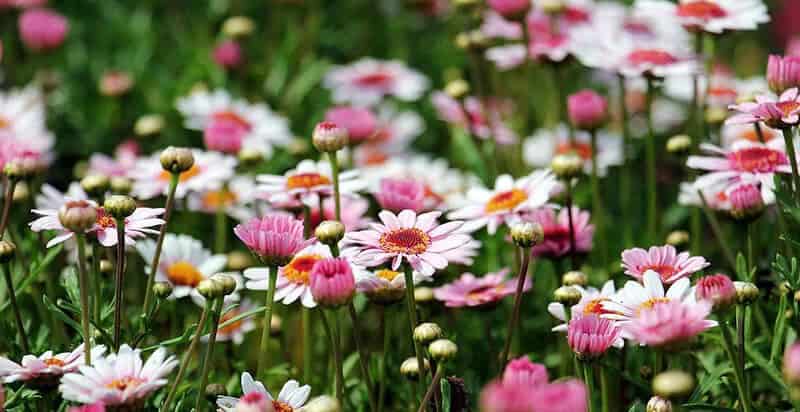
The bright yellow flowers of this potted plant exude a sense of faith, cheer, simplicity, and loyal love, making it an excellent choice for those seeking a symbolically rich addition to their space. This versatile bloom requires low to average watering and can thrive in a variety of soil conditions, from moist to well-drained, acid, alkaline, or neutral. It’s also tolerant of a range of temperatures, growing happily in zones 10-11.
With full sun or dappled shade, this showy plant will burst into bloom during the spring and early summer months, adding grandeur to lawns, gardens, or containers alike.
Coneflower ‘PowWow Wild Berry’ (Echinacea Pursuer)
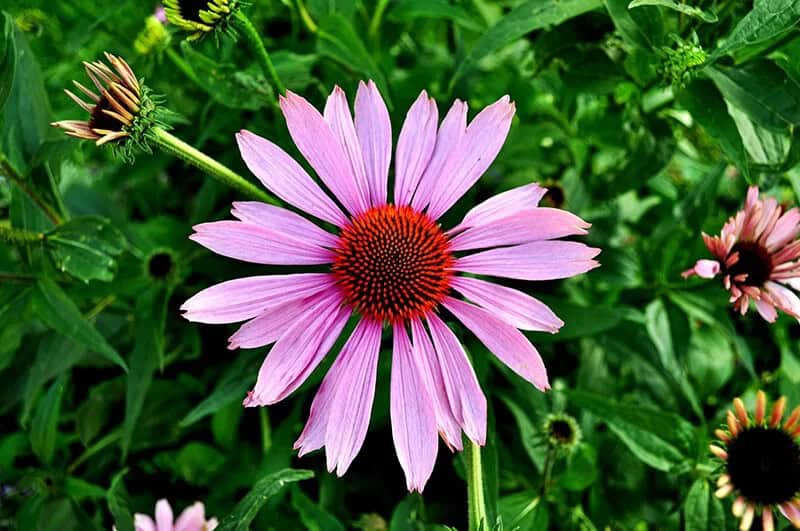
The Echinacea Pursuer’ Powwow Wild Berry’ boasts striking, large rose-purple blooms that grow on sturdy stems. One of its notable characteristics is its ability to produce offsets or baby plants around the base of the main stem, resulting in multiple flowering per plant. This variety attracts a range of hummingbirds and butterflies, making it a popular choice for gardeners seeking to attract pollinators.
Additionally, the flowers are suitable for both indoor and outdoor cultivation and can be used therapeutically as a concentrate or herbal tea. The symbolic meaning associated with Echinacea Pursuer’ Powwow Wild Berry’ is strength and healing. This variety requires low water levels, well-drained soil that can accommodate acidic, alkaline, or neutral pH conditions, and can thrive in USDA hardiness zones 3 to 8. It prefers full sun to partial shade and blooms from June to August.
Cheyenne Spirit’ Coneflower (Echinacea’ Cheyenne Spirit’)
The Cheyenne Spirit Coneflower is a standout choice for adding visual interest to beds and borders, prairies, wildflower gardens, and cottage gardens. Its striking light yellow to dark red flowers are not only visually stunning but also make excellent cut flowers. While deer tend to leave these blooms alone, they attract hummingbirds, bees, butterflies, and other pollinators with their sweet nectar.
For optimal results, plant Cheyenne Spirit Coneflower from spring through fall, allowing you to enjoy its beauty throughout the year. Interestingly, this flower has a rich history of use among native Americans, who employed it to heal wounds and combat infections.
Monarch-of-the-Veld (Arctotis Fastuosa)

The Monarch-of-the-Veld (Arctotis Fastuosa) flower, a stunning addition to any garden, boasts vibrant colors ranging from yellow and white to purple, orange, and black. These jewel-toned blooms are not only a visual treat but also attract wildlife, such as warblers, which feed on their nectar. Native to South Africa, this perennial plant thrives in zones 4 to 11, where it requires full sun and rich, well-drained soil.
Water regularly, but be aware that these flowers may not survive indoor conditions. In fact, they typically die off during winter without proper protection. For ornamental purposes or floristry uses, the Monarch-of-the-Veld is a popular choice. As a nesting weed for birds, it’s also a great way to attract wildlife to your garden or aviary.
27 Showy Richly Colored Awesome Daisies to Make your House and Garden a Paradise
Daisy flowers exude an air of exotic elegance, with their lush, chic, and artful appearances making them truly idyllic. While some varieties may primarily serve as visual treats, others possess a distinctive musky aroma that adds to their allure. To achieve the desired artistic effect, it’s recommended to plant at least two daisies together. With multiple types of daisy flower plants available, each with its unique characteristics, planting and care are surprisingly straightforward.
Interestingly, some daisies have edible or medicinal properties, while others are entirely toxic and solely for aesthetic purposes. Despite their differences, these charming flowers have been a pleasing presence in our world, captivating both the eye and the nose. For those looking to make a bold statement, cultivating different types of daisy flowers is sure to be a rewarding experience that won’t leave you disappointed.
